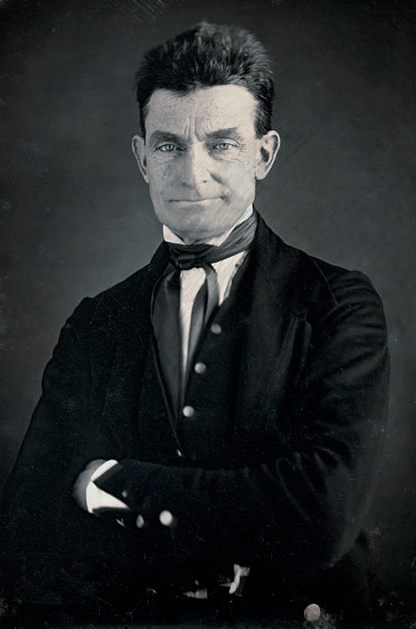Caleb Lagerwey
Robby May
AP US History 🇺🇸
454 resourcesSee Units
Slavery in the Western territories continued to be a problem, even after the Compromise of 1850—sorry, Henry Clay!
🎥 Watch: AP US History - Road to the Civil War
Kansas- Nebraska Act
Kansas Nebraska Act overrode the Missouri Compromise with Popular Sovereignty: it allowed the settlers in the Kansas and Nebraska territories (see map) to vote on whether or not to allows slavery in their territory.
This bill was so controversial, partly because the voting was almost entirely along sectional lines: instead of Whigs vs. Democrats, you now had Northern Whigs and Northern Democrats teaming up against the bill and Southern Whigs and Southern Democrats supporting the bill.
This leads to the breakup of the Whig Party, which was split into Conscience Whigs (Northern Whigs whose consciences were bothered by slavery) and Cotton Whigs (Southern Whigs who supported slavery for its economic and cotton-based agricultural value to the nation).
After the Whigs split, some of the Conscience Whigs teamed up with other anti-slavery parties such as the Liberty Party and the Free Soil Party, along with some Know-Nothings, to form the Republican Party.
The Republicans are a largely northern party whose existence is all about opposition to slavery in the territories and thus to the Kansas-Nebraska Act. 1854 is, therefore, the start of the 3rd Party System, with largely regional parties splitting the country.
Bleeding Kansas
The Kansas-Nebraska Act also caused Bleeding Kansas as violence erupted to ensure victory for pro- or anti-slavery forces in Kansas. Most of the Kansas settlers were Free Soilers, but every time there was a vote on popular sovereignty, thousands of pro-slavery Border Ruffians poured in from Missouri to vote for slavery (even though they weren’t citizens of the state and thus were not entitled to vote).
John Brown, the famous abolitionist, was involved in the violence in Kansas, which eventually killed around 200 people.
Caning of Senator Sumner
The violence in Kansas spilled over into the halls of the US Congress. On May 22, 1856, Rep. Preston Brooks of South Carolina erupted onto the floor of the Senate with a cane in his hand. He approached Charles Sumner (anti-slavery Senator from MA) who had given a speech condemning slavery.
The speech included insulting references to Senator Andrew Butler of SC. Brooks found Sumner at his desk and battered him over the head. He made an attempt to rise from the desk, but collapsed onto the floor under the torrent of blows. He was so badly injured that he didn’t return to the Senate for 3 years.
Lecompton Constitution
One of Buchanan’s (probably the worst president in American history) first challenges as president was to decide whether to accept or reject a proslavery state constitution for Kansas submitted by the Southern legislature in Lecompton.
He knew that the constitution did not have the support of the majority of settlers. Even so, he asked Congress to accept the document and admit Kansas as a slave state. Congress didn’t do so, because many Democrats, including Stephen Douglas, joined with Republicans in rejecting the Lecompton constitution.
The next year, it was overwhelmingly rejected by Kansas settlers, most of who were antislavery Republicans.
Dred Scott
Dred Scott, an enslaved person living in Missouri, sued in Federal court claiming that he should be free because he was brought to Wisconsin, a free state where he lived for years.
In March 1857, the Supreme Court ruled in Dred Scott v. Sanford that African Americans descended from enslaved people, whether now free or slave, were not citizens of the US and thus could not sue in a Federal court.
The court should have left the matter there, but Chief Justice Roger B. Taney went further, deciding that the Missouri Compromise was unconstitutional because Congress could not make laws prohibiting slavery in United States territories. Since slaves were considered property, the US government could not take them away without due process as per the Fifth Amendment.
This was immediately condemned by Republicans and many in the North since it invalidated compromises over slavery in the territories and essentially allowed slavery in the Northern states too. It was eventually overturned by the 14th Amendment and is widely considered one of the worst Supreme Court decisions of all time.
John Brown’s Raid on Harpers Ferry

Photo Courtesy of Wikimedia
Brown, who appeared in a manner of an Old Testament Prophet, thought of himself as God’s chosen instrument “to purge this land with blood” and eradicate the sin of slaveholding. He led men across the Potomac River from his base in Maryland and seized the federal arsenal at Harpers Ferry. He hoped that his revolt would spread with slaves joining him, but neighboring slaves did not rise up.
Brown was sentenced and hanged. Southerners were stunned by the outpouring of sympathy from the North. He was considered in some ways a martyred saint. In the North, there were firing of cannons, ringing of bells and memorial services on the day of his death.
🎥 Watch: AP US History - Antebellum America
Browse Study Guides By Unit
🌽Unit 1 – Interactions North America, 1491-1607
🦃Unit 2 – Colonial Society, 1607-1754
🔫Unit 3 – Conflict & American Independence, 1754-1800
🐎Unit 4 – American Expansion, 1800-1848
💣Unit 5 – Civil War & Reconstruction, 1848-1877
🚂Unit 6 – Industrialization & the Gilded Age, 1865-1898
🌎Unit 7 – Conflict in the Early 20th Century, 1890-1945
🥶Unit 8 – The Postwar Period & Cold War, 1945-1980
📲Unit 9 – Entering Into the 21st Century, 1980-Present
🚀Thematic Guides
🧐Multiple Choice Questions (MCQ)
📋Short Answer Questions (SAQ)
📝Long Essay Questions (LEQ)
📑Document Based Questions (DBQ)
📆Big Reviews: Finals & Exam Prep
✍️Exam Skills (MC, SAQ, LEQ, DBQ)

Fiveable
Resources
© 2023 Fiveable Inc. All rights reserved.